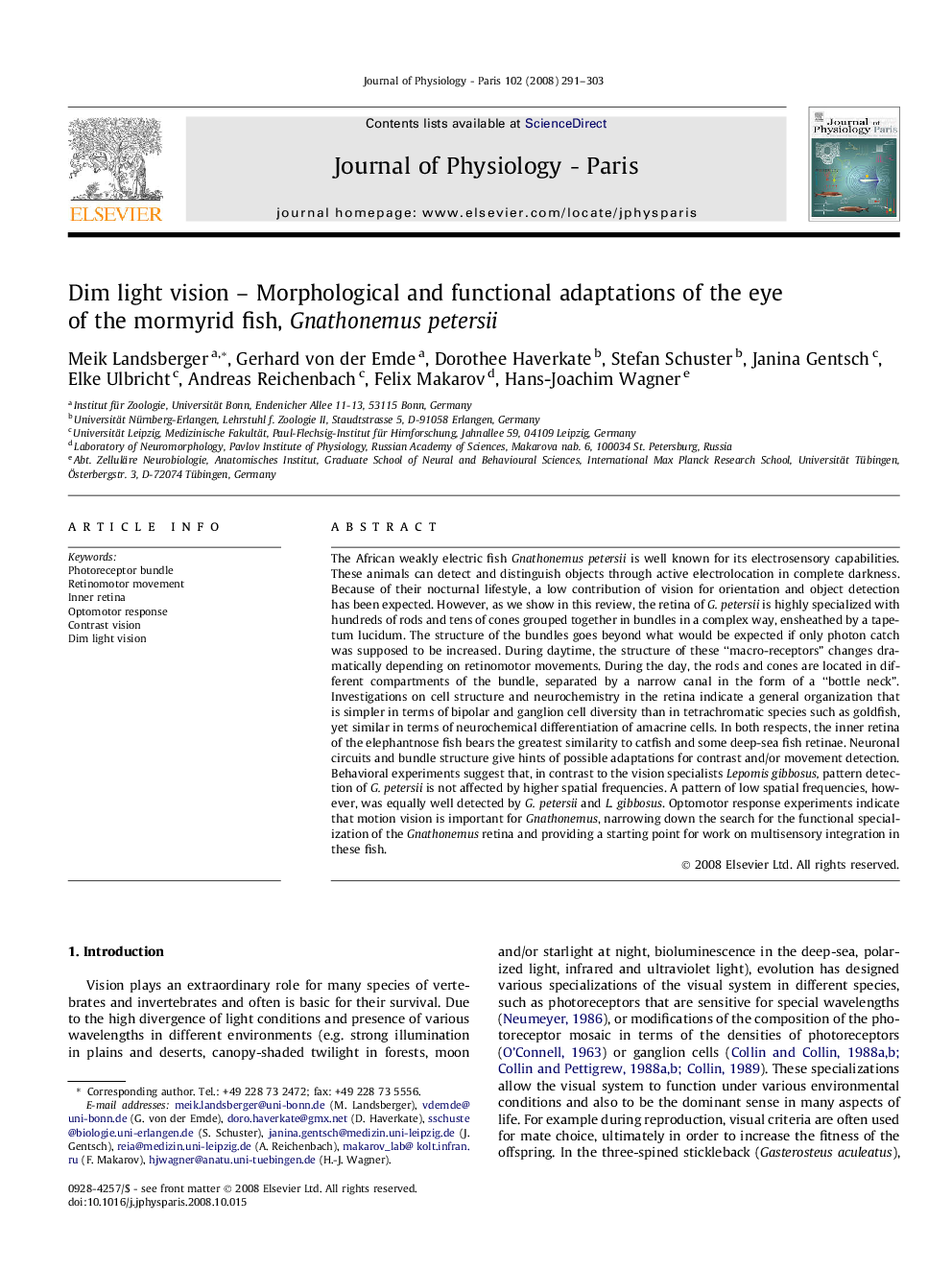| Article ID | Journal | Published Year | Pages | File Type |
|---|---|---|---|---|
| 2842494 | Journal of Physiology-Paris | 2008 | 13 Pages |
The African weakly electric fish Gnathonemus petersii is well known for its electrosensory capabilities. These animals can detect and distinguish objects through active electrolocation in complete darkness. Because of their nocturnal lifestyle, a low contribution of vision for orientation and object detection has been expected. However, as we show in this review, the retina of G. petersii is highly specialized with hundreds of rods and tens of cones grouped together in bundles in a complex way, ensheathed by a tapetum lucidum. The structure of the bundles goes beyond what would be expected if only photon catch was supposed to be increased. During daytime, the structure of these “macro-receptors” changes dramatically depending on retinomotor movements. During the day, the rods and cones are located in different compartments of the bundle, separated by a narrow canal in the form of a “bottle neck”. Investigations on cell structure and neurochemistry in the retina indicate a general organization that is simpler in terms of bipolar and ganglion cell diversity than in tetrachromatic species such as goldfish, yet similar in terms of neurochemical differentiation of amacrine cells. In both respects, the inner retina of the elephantnose fish bears the greatest similarity to catfish and some deep-sea fish retinae. Neuronal circuits and bundle structure give hints of possible adaptations for contrast and/or movement detection. Behavioral experiments suggest that, in contrast to the vision specialists Lepomis gibbosus, pattern detection of G. petersii is not affected by higher spatial frequencies. A pattern of low spatial frequencies, however, was equally well detected by G. petersii and L. gibbosus. Optomotor response experiments indicate that motion vision is important for Gnathonemus, narrowing down the search for the functional specialization of the Gnathonemus retina and providing a starting point for work on multisensory integration in these fish.
